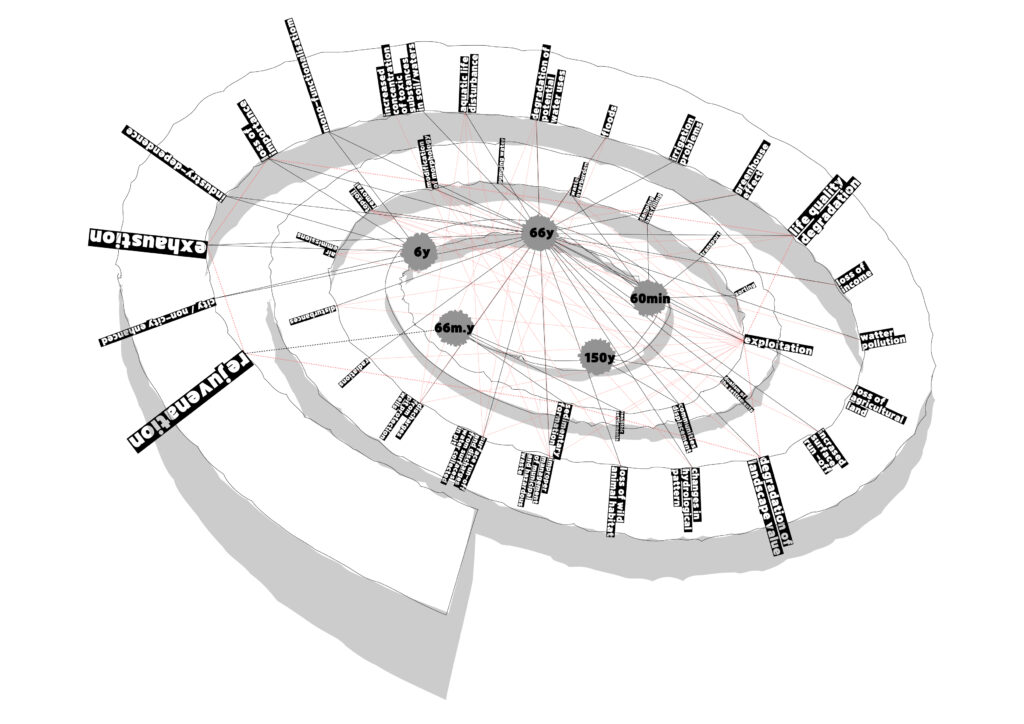HINTERLAND IN TRANSITION
To answer the question ‘what after?’, the project addresses the future process of transition by embracing the temporal processes that naturally affect both the environment, and the architectural interventions. The goal of the project became the preparation for the continuous, dynamic evolution, which is capable of continuous adaptation. Therefore, the design focuses on identifying points of intensification, how the necessary steps could be integrated into existing conditions, and what change would come about over longer periods of time.
The underlying idea is that hinterlands should remain in a state of flux, but then in a more balanced, and less profit-oriented manner.
This proposed ‘hinterland in transition’ looks into the critical steps needed to prevent it from continuous decay and decline. The landscape remains the landscape of production, but it needs to reinvent itself into a collective system of public works that supports the economy, becoming a polyfunctional infrastructure. This approach has the intent to transform a mono-functional industrial structure into a multi-layered, urban-ecological system, and integrate waste, water, transport, food, and energy.
The proposed interventions highlight certain aspects, while their influence is acupunctural, and highlights certain moments as points of intensification. By doing this, the project aims to spark a particular place at a specific moment, becoming a point of ignition. However, this is only the first step: in contrast to the speed of technological acceleration paradigm, the effects of future transformation will be slow and subtle, requiring the active and sustained engagement of long-term partnerships between the inhabitants and public sectors, and with much greater attention to various visible and non-visible factors and outcomes.
Therefore, the project is but a small gesture indicating the direction in which the continuous evolvement of the hinterland should proceed.

